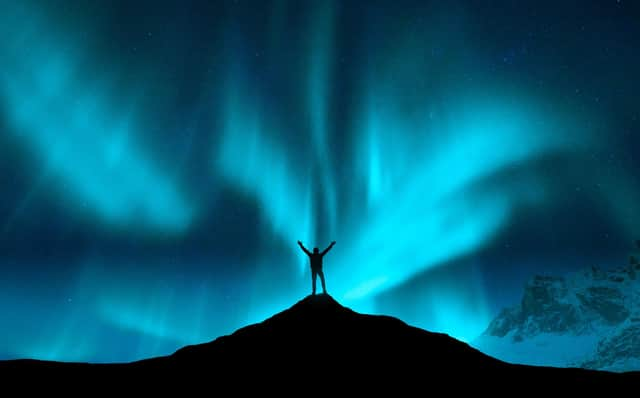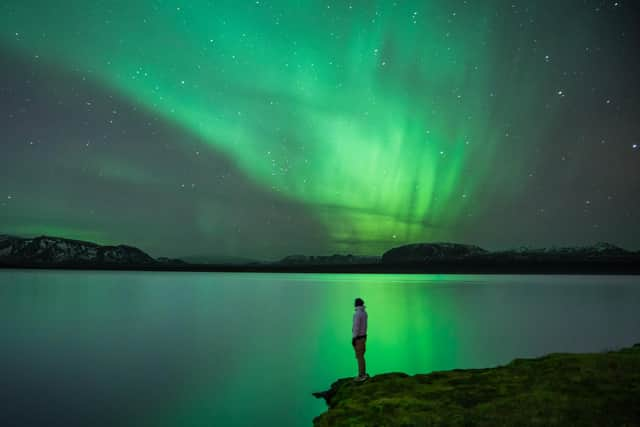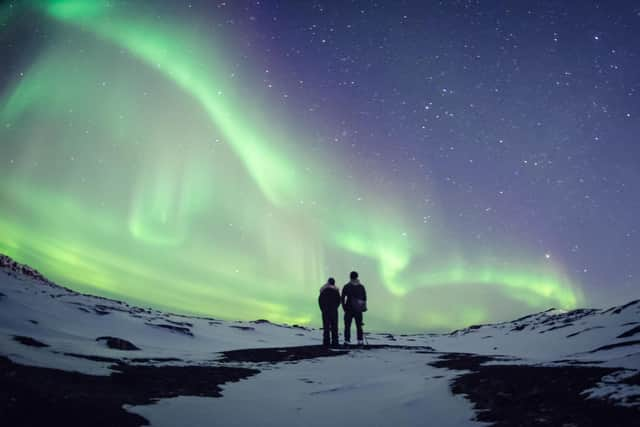Ultimate Northern Lights tours: Chasing celestial splendour in the ultimate guide


For those seeking to witness the celestial spectacle of the Northern Lights, also known as the Aurora Borealis, in all its glory, an essential destination stands out—the land of fire and ice, Iceland. As travellers embark on their ‘northern lights tour Iceland Reykjavik,’ they are primed for an awe-inspiring journey chasing celestial splendour. In this comprehensive guide, Emmanuel Davis of Guide to Iceland will delve into the world of Northern Lights tours, exploring the science behind this natural phenomenon, the best places to witness it, and the tips and tricks to maximize your chances of experiencing this breathtaking display.
The Science Behind the Northern Lights
Before we embark on our journey to witness the Northern Lights, it's essential to understand the science behind this mesmerizing phenomenon. Research findings reveal that the Northern Lights are the result of charged particles from the sun colliding with the Earth's magnetic field. When these particles enter the Earth's atmosphere, they collide with gases, such as oxygen and nitrogen, producing dazzling displays of light in various colours, including green, pink, purple, and red.


The intensity and colours of the Northern Lights depend on several factors, including the type of gas particles involved and the altitude at which the collisions occur. The Earth's magnetic poles play a crucial role in guiding these charged particles towards the polar regions, making places like Iceland ideal for witnessing this celestial splendour. Understanding the science behind the Northern Lights adds a layer of appreciation to the experience, allowing travellers to marvel not only at the beauty of the lights but also at the intricate dance of particles and magnetic fields that create this natural wonder.
Iceland – The Ultimate Northern Lights Destination
Iceland has earned its reputation as one of the ultimate destinations for Northern Lights enthusiasts. Statistics reveal that the country offers a high probability of witnessing this celestial phenomenon due to its location near the Arctic Circle. Additionally, Iceland's vast open landscapes and minimal light pollution create the perfect conditions for clear night skies, further enhancing the Northern Lights viewing experience.
One of the best places to embark on a ‘northern lights tour Iceland Reykjavik’ is from the capital city itself. Reykjavik's proximity to nature and its excellent tour operators make it a convenient starting point for chasing the Northern Lights. From Reykjavik, travellers can venture into the countryside, where darker skies increase the chances of seeing the lights. Popular Northern Lights destinations in Iceland include the Golden Circle, Thingvellir National Park, and the remote Westfjords.


Choosing the Right Northern Lights Tour
When planning your Northern Lights adventure, it's essential to choose the right tour to maximize your chances of witnessing this celestial splendour. Research findings suggest that guided tours offer a significant advantage, as experienced guides know the best locations and times for Northern Lights viewing. These guides also provide valuable insights into the science and folklore surrounding the phenomenon, adding depth to your experience.
Some tours even offer additional perks, such as warm beverages, photography tips, and cosy shelters to keep you comfortable during the long nights of Northern Lights hunting. It's essential to research and select a tour operator with a good track record and positive reviews to ensure a memorable experience. Consider factors such as the size of the group, the duration of the tour, and whether the operator offers free rebooking in case the Northern Lights do not make an appearance on your chosen night.
Timing Is Everything
Timing plays a crucial role in the success of your Northern Lights tour. Research statistics reveal that the best time to witness the Northern Lights in Iceland is during the winter months, from September to April when the nights are long and darkness prevails. The peak Northern Lights season typically falls between November and February when the chances of clear skies are highest.
It's important to keep in mind that the Northern Lights are a natural phenomenon, and their appearance is not guaranteed. Patience is key, and travellers should be prepared for multiple attempts if necessary. Many tour operators offer a free rebooking policy, allowing visitors to try again on subsequent nights until they are fortunate enough to witness the lights.
Capturing the Magic – Photography Tips
For those looking to capture the magic of the Northern Lights through their camera lens, some photography tips can make all the difference. Research findings suggest using a sturdy tripod to keep your camera steady during long exposures. A wide-angle lens with a low aperture setting (f/2.8 or lower) is ideal for capturing the faint light of the Northern Lights.
Adjusting your camera's settings, such as ISO, shutter speed, and focus, is essential for capturing the vivid colours and intricate patterns of the light. Additionally, using a remote shutter release or the camera's timer function can help minimize camera shake. Experimenting with different compositions and foreground elements, such as mountains, trees, or bodies of water, can add depth and interest to your Northern Lights photos.
The Cultural and Folklore Aspect
While chasing the Northern Lights is primarily a scientific and visual endeavour, it also offers a fascinating window into the cultural and folklore aspects of the regions where they appear. Research findings suggest that many indigenous cultures have rich stories and legends associated with the Northern Lights. In Iceland, for example, the lights are often referred to as Guds Spegl or God's Mirrors, and have been a source of inspiration for countless myths and sagas. Engaging with local guides and communities during your Northern Lights tour can provide valuable insights into these cultural connections and add depth to your experience.
Sustainable Northern Lights Tourism
As the popularity of Northern Lights tourism continues to grow, it's important to consider the environmental impact of these tours. Statistics show that a surge in tourism can lead to increased light pollution, which can diminish the visibility of the Northern Lights. To ensure the sustainability of Northern Lights tourism, it's crucial to choose tour operators who prioritize responsible and eco-friendly practices. Additionally, travellers can help reduce their impact by adhering to Leave No Trace principles and respecting the natural environment while on their tours.
Conclusion
Chasing the Northern Lights in Iceland is not just a journey to witness a celestial wonder; it's an exploration of the intersection of science, nature, culture, and sustainability. As travellers embark on a ‘northern lights tour of Iceland Reykjavik,’ they become part of a legacy of adventurers who have marvelled at the dance of charged particles and magnetic fields that create this awe-inspiring phenomenon.
Iceland's unique position near the Arctic Circle and its minimal light pollution make it one of the world's premier destinations for Northern Lights viewing. Choosing the right tour, timing your visit during the peak season, and mastering photography techniques are essential components of a successful Northern Lights adventure. Yet, beyond the scientific and visual aspects, Northern Lights tourism offers a chance to connect with the cultural and folklore traditions of the regions where they appear. Ultimately, chasing the Northern Lights in Iceland is a transformative experience, where the wonders of the cosmos meet the wonders of our planet, leaving travellers with memories that will shine as brightly as the lights themselves.